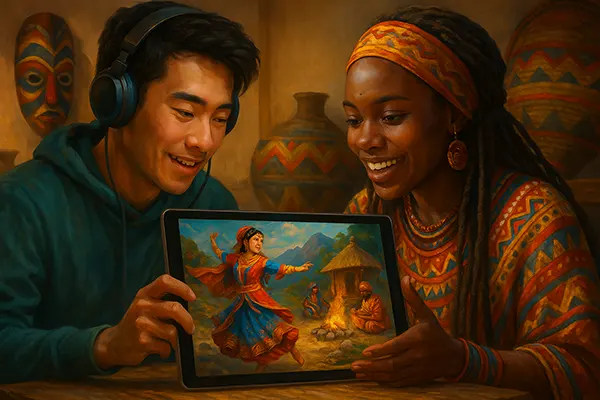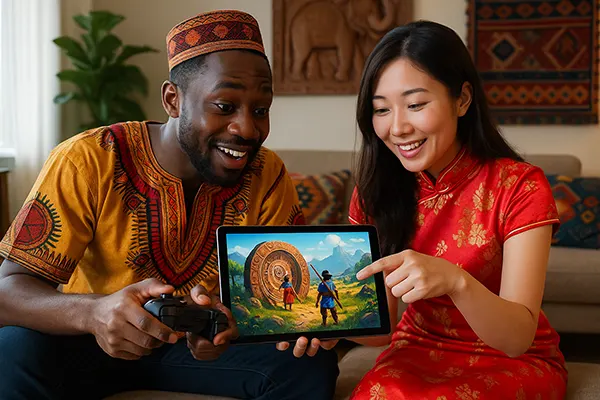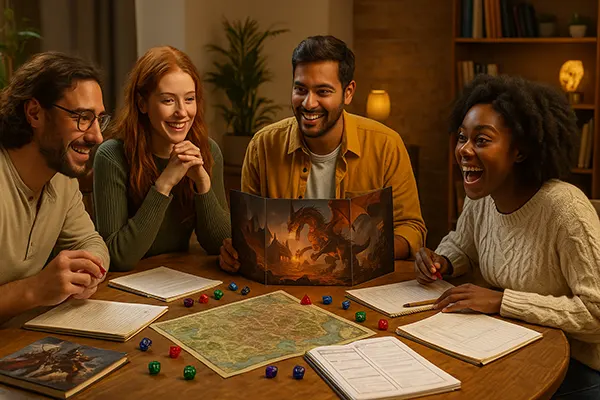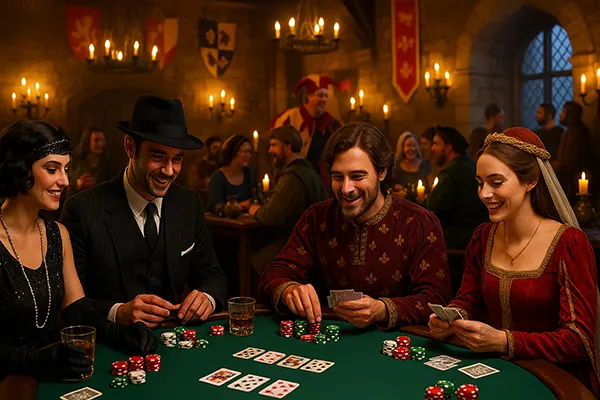
Cultural Stories Through Games: Discovering the Traditions of Nations in Play
Games have long served as a bridge between entertainment and education, allowing people to learn about different cultures through engaging and interactive experiences. In 2025, digital technologies and creative storytelling make it possible to explore the history, myths, and customs of various nations through games that combine cultural depth with modern design. This connection transforms gaming into a medium of cultural preservation and understanding, far beyond mere leisure.
The Educational Role of Cultural Games
Modern game developers increasingly aim to blend learning with fun, creating experiences that teach players about languages, traditions, and historical events. For example, narrative-driven titles set in ancient civilisations or folklore-based adventures offer an authentic glimpse into the values and beliefs of different societies. These games do not simply depict history; they interpret it through interactive storytelling, making the learning process more engaging and memorable.
Games such as “Never Alone” (inspired by Iñupiat legends) or “Mulaka” (based on Tarahumara mythology) demonstrate how cultural heritage can be both preserved and shared. Players learn native myths, traditional values, and moral lessons through exploration and problem-solving. Such projects contribute to safeguarding intangible heritage while offering a new form of education for global audiences.
In addition to folklore-inspired titles, simulation and strategy games also allow exploration of real historical and cultural processes. Players can manage ancient cities, trade routes, and diplomatic relations, gaining insight into the social and economic dynamics that shaped civilisations across centuries.
Games as Tools of Cultural Preservation
Preserving culture through digital means has become a growing focus within the gaming industry. Museums, universities, and cultural organisations now collaborate with developers to digitise local traditions, crafts, and rituals. This ensures that even lesser-known aspects of heritage are recorded and accessible to new generations. In 2025, such partnerships have expanded worldwide, integrating local knowledge with cutting-edge technology.
Many cultural games now include voice acting in indigenous languages and visual elements inspired by traditional art styles. This not only strengthens authenticity but also encourages younger members of those communities to engage with their cultural roots. In some cases, such initiatives have revitalised endangered languages, giving them new life through interactive media.
By transforming folklore and customs into gameplay mechanics, developers provide a unique method for preserving heritage. Rather than reading about traditions in books, players experience them first-hand — through decision-making, storytelling, and participation in digital rituals that mirror their real-world origins.
Global Diversity Reflected in Gaming
The global gaming landscape in 2025 is more diverse than ever before. Independent studios from Africa, Asia, and South America are producing games that reflect their distinct cultural identities. This shift not only broadens representation but also challenges stereotypes, offering international players a richer and more authentic view of the world.
For instance, African developers are integrating local myths, tribal stories, and environmental themes into gameplay. Similarly, Southeast Asian creators combine spiritual beliefs and folk art to deliver emotionally powerful stories. Such diversity strengthens cross-cultural understanding and encourages players to appreciate the uniqueness of each region’s traditions.
These developments also highlight the importance of inclusivity in storytelling. By showcasing underrepresented voices and cultural narratives, gaming has evolved into an artistic form that mirrors the complexity of human civilisation. Every quest, character, or environment becomes an opportunity to celebrate cultural plurality and shared human experience.
The Role of Technology in Promoting Cultural Exchange
Virtual and augmented reality technologies have greatly expanded how cultural stories are told. Players can now walk through virtual reconstructions of historical sites, attend digital festivals, or participate in interactive rituals from other cultures. Such immersion promotes empathy and understanding — essential qualities in a world that values diversity and collaboration.
Educational institutions and cultural ministries increasingly use these technologies to make heritage accessible to global audiences. For example, VR projects allow students to explore ancient temples or participate in cultural events that would otherwise require travel. This approach transforms passive observation into active engagement, strengthening emotional connection with history.
In 2025, these digital tools are no longer limited to large studios or museums; smaller creators and local communities now use them to tell their own stories. This democratisation of technology ensures that cultural preservation and exchange remain inclusive and dynamic processes.

The Future of Cultural Storytelling Through Games
Looking ahead, the relationship between culture and gaming will continue to deepen. As awareness of cultural diversity grows, more creators are choosing to tell stories rooted in authenticity rather than fantasy. The result is a new wave of games that balance creative freedom with respect for tradition, contributing to a more informed and empathetic global audience.
Governments and cultural institutions are beginning to recognise the educational and diplomatic potential of gaming. By funding projects that highlight local history and heritage, they support not just creative industries but also cultural diplomacy. Such initiatives strengthen mutual respect and international collaboration.
Ultimately, cultural games encourage reflection on identity, heritage, and shared human values. They remind us that traditions are not relics of the past but living stories that evolve with every generation — stories that now find a new home in the interactive worlds of gaming.
Encouraging Responsible Cultural Representation
As more developers explore cultural themes, the need for accuracy and sensitivity becomes vital. Collaborating with historians, linguists, and community representatives ensures that cultural stories are portrayed with respect. This process fosters trust and prevents misrepresentation that could otherwise lead to cultural appropriation.
Developers are also encouraged to involve members of the represented cultures directly in the creative process. Such cooperation provides authenticity and strengthens the connection between the storytellers and the subjects of their narratives. It transforms cultural exchange into mutual collaboration rather than one-sided interpretation.
When cultural stories are told responsibly, they inspire players to learn, appreciate, and connect. In this way, games evolve beyond entertainment — becoming instruments of cultural continuity and empathy in the interconnected world of 2025.


